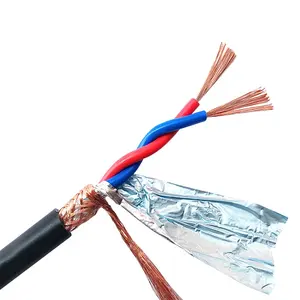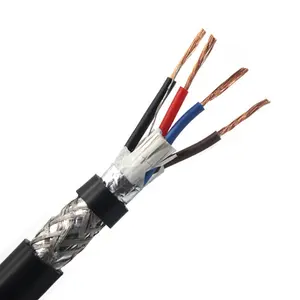An RS485 cable is a type of communication cable specifically designed with RS485, a standard defining the electrical characteristics of a balanced communication network. RS485 cables are commonly used in various applications such as industrial automation, building management systems, and other scenarios where reliable and noise-resistant communication is essential.
Features of RS485 Cable for Robust Data Communication
The RS485 cable possesses several features contributing to its effectiveness in data communication. One key feature is its differential signaling method, which involves transmitting data using two wires with opposite voltage polarities. This approach helps the cable resist electromagnetic interference and allows extended cable lengths rather than single-ended communication methods. The rs485 shielded cable is known for supporting multi-point communication, meaning multiple devices can be connected to the same network, facilitating versatile and complex setups. Additionally, this cable supports half-duplex communication, enabling devices to both send and receive data, although not simultaneously. Its twisted pair construction helps reduce signal distortion and enhances the cable's noise immunity. With features like these, the rs485 serial cable is a reliable choice for applications requiring robust and long-distance data transmission in challenging environments, such as industrial automation and building control systems.
Types of RS-485 Cables for Varied Applications
RS-485 cables come in various types. One common type of rs 485 communication cable is the twisted pair cable. It consists of two insulated copper conductors twisted together, which helps reduce electromagnetic interference and ensures signal integrity. The twisted pair design allows RS-485 to achieve better noise immunity, making it suitable for environments with electrical interference. Another type is the shielded twisted pair (STP) cable. In addition to the serpentine pair configuration, STP cables feature a metallic shield surrounding the conductors. This shield protects against external electromagnetic interference, improving performance in electrically noisy environments. The shielding minimizes the risk of signal degradation, making STP cables suitable for applications where data integrity is crucial. Furthermore, there are plenum-rated RS-485 cables designed for use in building plenum spaces. Plenum spaces are air-handling spaces typically found in commercial buildings. Plenum-rated cables meet specific fire safety and environmental standards for installation in these spaces, ensuring compliance with building codes.
Occasions for Using RS485 Cables in Industrial and Commercial Settings
RS485 cables serve a crucial role in various industrial and commercial applications. The primary occasion for using RS485 cables is to create a network where multiple devices, such as sensors, controllers, or instruments, must communicate over relatively long distances. Unlike standard communication cables, rs485 Modbus cables feature twisted pairs of wires, which helps reduce electromagnetic interference and enhance signal integrity. These cables are commonly employed when the devices are distributed across different points within a building, factory, or industrial setting. RS485 communication is well-suited for robust and noise-resistant data transfer applications, making it ideal for environments with electrical interference or long cable runs. Moreover, RS485 cables are often utilized in systems that require multidrop configurations, where multiple devices share the same communication bus. This makes them suitable for building automation, process control, and other applications where a network of devices needs to exchange information. The versatility of rs485 to USB cable extends to various industries, including manufacturing, HVAC (heating, ventilation, and air conditioning) systems, and security systems. The cables create reliable and efficient communication networks, ensuring seamless data exchange between devices over extended distances.










































 浙公网安备 33010002000092号
浙公网安备 33010002000092号 浙B2-20120091-4
浙B2-20120091-4